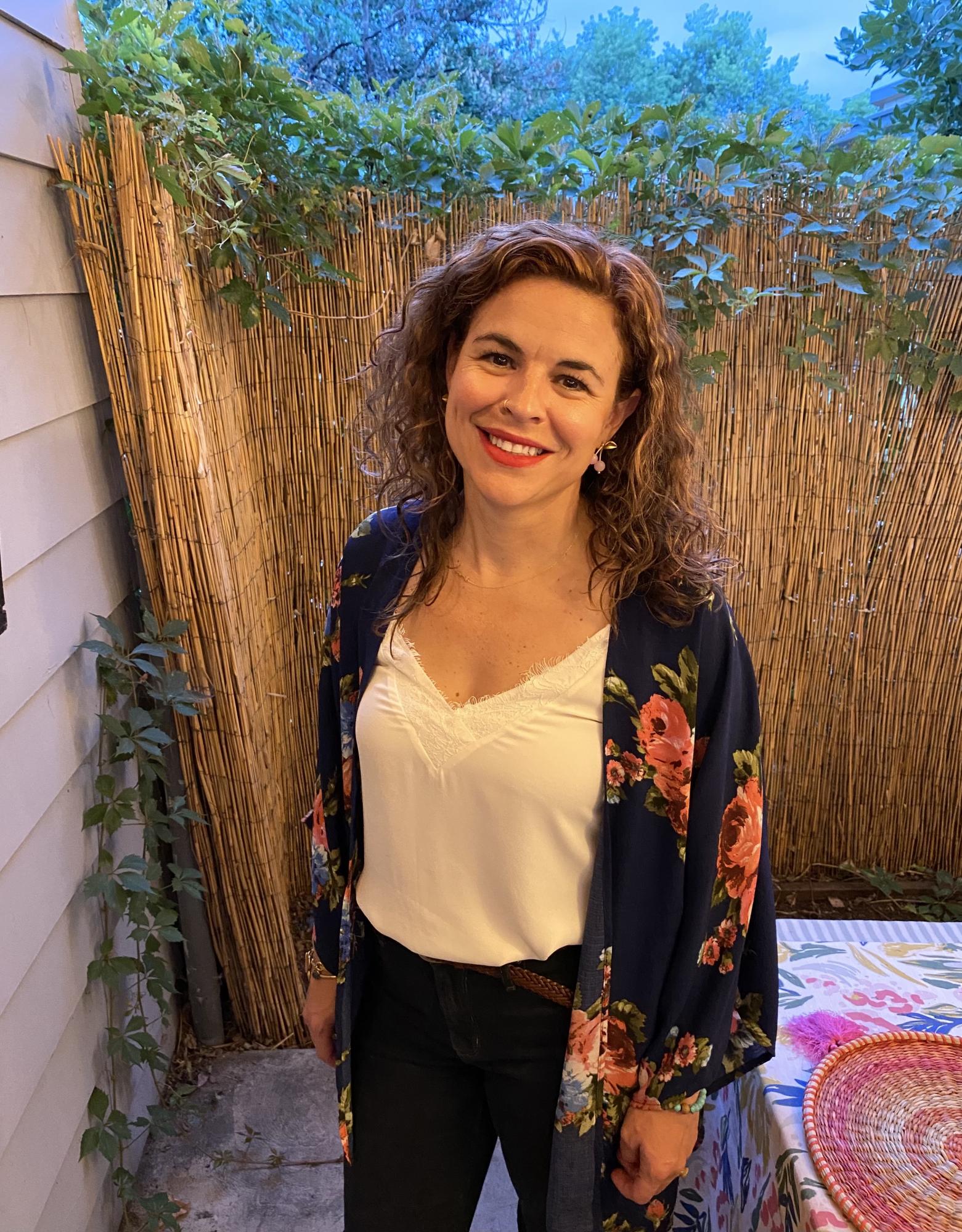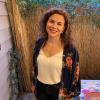Meet Teaching Artist Kate Carmody


Kate Carmody is a recipient of a CINTAS Foundations grant supporting artists born in Cuba or of Cuban descent. Her work has been published or is forthcoming in Potomac Review, Essay Daily, No Contact, Los Angeles Review, the Journal of Compressed Creative Arts, and Lunch Ticket, among others. She received her MFA from Antioch University in Los Angeles. While pursuing her MFA in creative nonfiction, she worked as a blogger, assistant blog editor, and the assistant lead editor for the youth spotlight series at Lunch Ticket. In addition to teaching at the Loft, she teaches writing through Antioch’s Continuing Education Program and Austin Bat Cave. In 2012, she received the Facing History and Ourselves Margot Stern Strom Teaching Award and, in 2017, was selected by Facing History and Ourselves to participate in a Bill and Melinda Gates Foundation grant-funded study to assess if peer-led professional development can improve teachers’ instruction of literacy standards. She lives in Denver, Colorado, with her husband and dog. The three of them are in a band called Dadafacer. Find her on Twitter at @KateCarmody8, on Instagram at carmo8, and on Linktree at linktr.ee/Carmo8.
To see Kate's current classes, visit her author bio page.
***
When did you start teaching? What path—career or otherwise—brought you here?
I started teaching high school in 2005. Throughout my teaching career, I’ve taught adults in various capacities, most notably through the organization Facing History and Ourselves. When I finished my MFA at Antioch University in LA, I wanted to get a job where I could write and teach. I loved teaching high school, but I was struggling with finding time to write. Because a big part of my low residency program was communicating and sharing online, I already knew how taking and teaching classes online can be a valuable learning experience.
I taught a couple of classes through Antioch’s continuing ed program and had a good experience. I especially enjoyed how teaching classes online was a way to connect with writers all over the country and the world. When I started looking into online teaching positions at literary centers around the country, the Loft was one of the top places that came to mind. I can’t remember if I learned about the Loft from Lighthouse Writers Workshop in Denver or from the bio of a writer I admire or even from one of my favorite presses that are both based in Minneapolis (Graywolf and Milkweed). Still, I was eager to apply and am honored to be welcomed into such a rich literary community!
How would you describe your teaching style?
I would describe my teaching style as student-centered and collaborative, as structured but not fixed. I believe in meeting students where they are and helping each student grow. I adjust my lessons according to students’ needs. In every course, students represent a broad spectrum of personalities, abilities, and needs. I’ve found that the clearer I am with my instruction and expectations, the easier it is to address every student.
I believe in the importance of choice, so I offer options with writing assignments and discussions. I also like to get students' input on what we want to do as we go along. Giving students some choice gives them control of their learning and allows things to unfold organically.
As writers, we share. The more room I create for students to share their thinking and writing, the more opportunities they have to celebrate their work and reflect on their craft.
When it comes to imagining and creating classes, where do your ideas come from? What in particular inspires you?
All over! Wherever art is happening. Right now, I’m writing this at the Eatery in Ridgeway, Colorado, and there’s a cool art fair happening in the park across the street. Earlier this week, I binged my new favorite show, Reservation Dogs. Last weekend, I chatted with a friend about the new exhibit at the MCA in Denver. Next week, I’m looking forward to being inspired by all the poets I’m reading with. These experiences spark ideas, and then I work through them to find what’s there to teach or use for a new piece or work in progress.
While I use these experiences for inspiration, anytime I read something new, I think about what techniques the writer is using and how I could try them in my work or teach them. I’m also a nerd for craft books and essays and interviews about craft in literary magazines.
What's the ideal environment for your classroom? What atmosphere are you hoping to establish?
I’ve always loved the Yeats quote, “Education is not the filling of a pail but the lighting of a fire.” Ideally, I’m fostering a classroom where students are fired up!
Being a part of a community and working to create and maintain a community is the foundation of my work as a writer, teacher, and activist. While I’m a sucker for craft books, I believe the best learning happens in a collaborative environment where all members (including me) are willing to learn from each other, challenge each other to think deeply, and support each other through the process. Part of that is providing students with diverse texts in terms of race, culture, gender, sexual orientation, age, and ability and exposing them to the breath of form. Writing and learning are about experimentation. I want students to give themselves permission to be curious and play! I want to create a safe, comfortable, and inclusive environment where students are empowered to be brave in their writing and conversations.
Regardless of what your class is specifically focusing on, what's the main goal you have for your students?
I hope students walk away from my courses with more confidence in their writing, with techniques to improve their writing, with contemporary writers to turn to for inspiration, and with an investment in continued participation in literary communities locally and virtually.
What are goals you have for yourself? These could be teaching goals, writing goals, career goals, community goals, etc.
Generally: to be curious, to be weird, to be a good literary citizen, listen, experiment, teach, collaborate, and write dangerously. Specifically: My main focus is on finishing my nonfiction book in progress, but I like exploring various creative projects as they arise. Lately, I’ve been having fun working with my husband and dog on a poetry and music project called Dadafacer.
What have been some of your own favorite educational experiences?
My work with Facing History and Ourselves shaped my understanding of history and positionality, which led me to Antioch University’s social justice-based MFA program. I’m grateful for finding and being welcomed into a community of disrupters earnestly working to bring change and inclusivity through their words. All of my mentors at Antioch, especially Ana Maria Spagna and Sarah Manguso, have had an enormous impact on me as a writer. I can’t say enough good things about Victoria Chang. She’s not only a brilliant writer but also an incredible educator. I hope that MFA programs around the country take note of how she’s created a program where writers, especially writers of color, flourish and graduate with a commitment to our communities.
I love teaching; it’s been a fundamental aspect of my identity since I started coaching field hockey camps in college. When I started taking my writing career more seriously, I thought maybe I should give up teaching. I’m thankful I didn’t. Teaching through literary centers has reminded me that the thinking, collaborating, and breakthroughs in a classroom bring me endless joy and continue to inspire my writing.
To you personally, what is the most important part of the literary arts?
I believe that education and art are the keys to a more just society. I must constantly experiment, reflect, and adjust my teaching and writing practices if I want my work to be a vehicle for positive change. Our art has the power to kill fascism and our white supremacist patriarchy. Brazilian experimental pop artist Tom Ze once said, “I don’t make art; I make spoken and sung journalism.” Our art is a fluid record of our experiences and of possibilities. “For there are no new ideas,” Audre Lorde reminds us. “There are only new ways of making them felt.” Our art gives people permission to celebrate our complexities, recognize our flaws, and figure out a better way to live together. We must perfect our craft, so everyone gains a sense of urgency in repairing harm, preserving humanity, and finding joy.
Is there anything else you'd like to share?
Teaching at the Loft has been a great experience so far. I can’t wait to dive into the next class!
